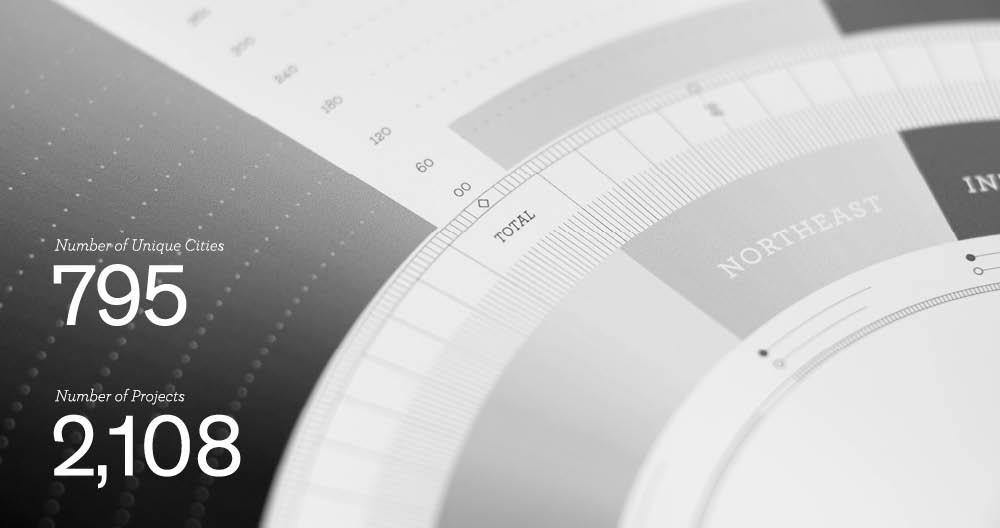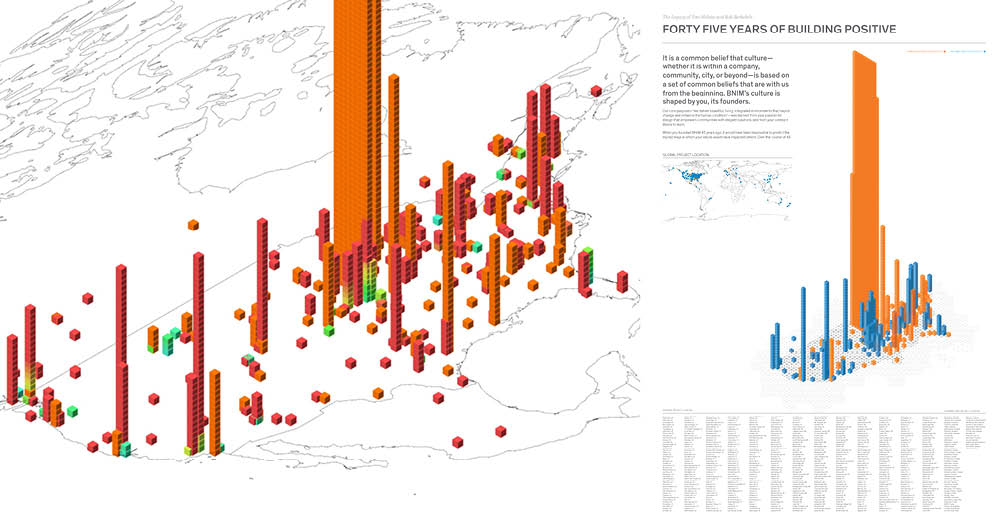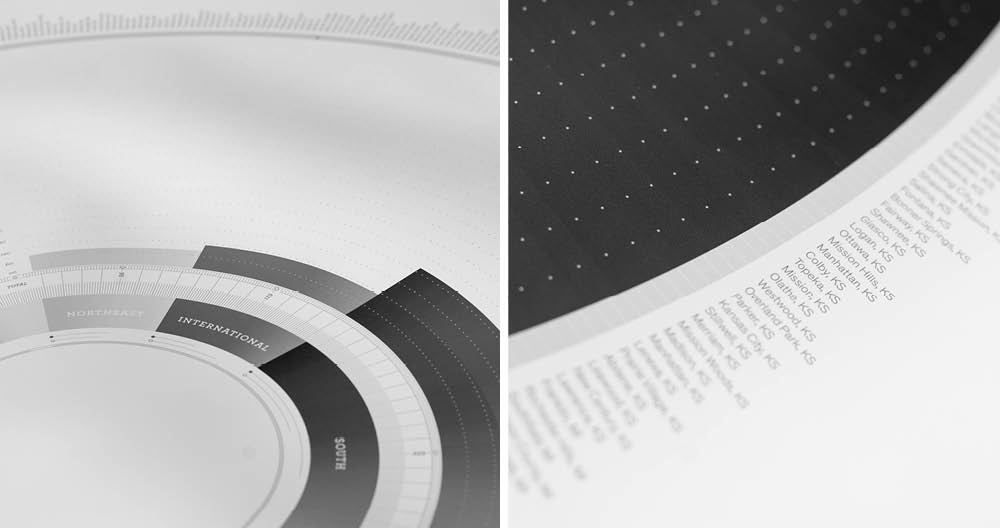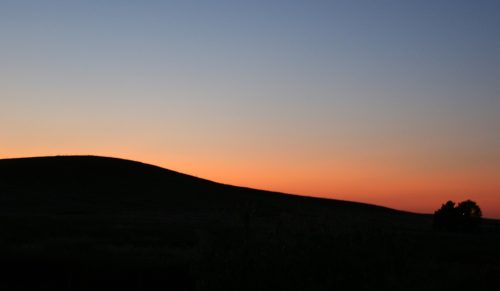
Building Positive Impact: An Information Graphic Charting 45 Years of Practice
Building Positive Impact is a visual examination of how architecture, design, and planning projects and leadership leave an indelible impact on place, people, and an industry of peers over almost five decades — each building the positive attributes of community and the built environment. When the firm’s founders, Bob Berkebile and Tom Nelson, established BNIM 45 years ago on the empty floor of Tom Nelson’s new house amidst a local construction strike, it would have been impossible to predict the myriad of ways in which this firm would impact local and global communities through design.
DATA COLLECTION
What started as a Midwest firm has developed into a practice that thinks and operates on a global scale, with offices in four US cities, and projects spanning the coasts and continents. To measure the influence of a four-decade-long span, we gathered data on all past projects and their locations. We discovered 2,108 separate projects in 795 unique cities.

DATA ARRANGEMENT — CONCEPT 1
With this information, we began exploring how to arrange this data visually. Our first concept provided each project an equal visual weight of a block form, which we stacked in correlation to its location on the map. We used data from Microsoft Excel and geocoded it, a process that takes the address of a place and outputs the latitude and longitude. Next, that info was extrapolated in Grasshopper and Rhino, which mapped the points geographically as the specified “stacking block” forms. After assigning colors to current and past BNIM projects, the file was exported to Adobe Illustrator for further design.

The tedious process provided results that — visually — left us unenthused. While the numbers were impressive, the measured impact this effort set out to showcase was really about more than projects, including the founders’ conceptual web of impact. Over the course of 45 years, the impact was not simply with projects but also with people and values, spawning other practices and an industry influenced by pivotal leadership in green building. The beliefs, values, and culture decentralized creating a wide, vast web of impact.
DATA ARRANGEMENT — CONCEPT 2
Beginning anew to better reflect the goal, we divided the 795 unique city project locations into five regional categories — Midwest, Northeast, South, Southwest, and International — all arranged radially. A gradient fill in each category further represented the number of projects in each region.

This concept evolved into the final data visualization, which reiterated the web of impact story we sought to tell from the beginning.

As John Muir said, “When we try to pick out anything by itself, we find it hitched to everything else in the Universe.” The same could be said for a design practice with longevity. The ideas started here are certainly hitched to many other people and places across the country — and, indeed, across the globe.

